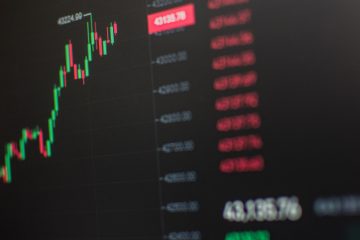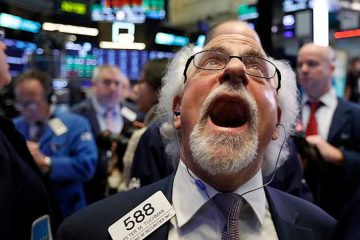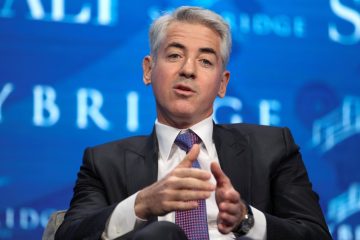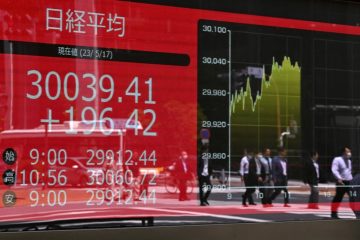The Bond Market Has a Message for the Fed
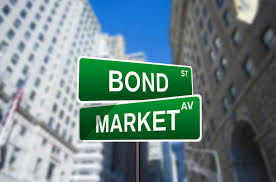
So much for looking to the Fed for salvation.
On July 31 at the Federal Reserve’s regular post-meeting press briefing, Chairman Powell announced a widely expected 25 basis points cut in the benchmark rate to 2.25%, the first reduction in over a decade. Powell was full of praise for the “healthy” and “resilient” U.S. economy that’s already shown improvement since the Fed signaled that it would swing to a more accommodative stance earlier this year. Still, he cited four potential threats that could derail the long expansion. A downshift in global growth, inflation running below the Fed’s 2% target, weakness in both industrial production and capex at home, and finally malaise caused by the tariff wars (witness the stock market’s performance Monday when all major indices were off some 3%). “There’s definitely an insurance aspect of it,” he said. “Trade [tensions] are something unusual. We don’t have a lot of experience responding.”
What Powell didn’t mention is what’s called “the flat yield curve.” The Fed controls the rate at which banks lend excess reserves to one another overnight, the Fed Funds rate. It’s the shortest of short-term rates. When the Fed raises the Fed Funds rate by tightening monetary policy, the interest charged on other government bonds of longer duration, notably the two and ten year treasury bills, rise as well. That’s the power of the Fed. In most periods, 10-year bond yields exceed the Fed Funds rate by a wide margin because even though they’re super-safe from default, they pose more risks because you’re getting a fixed coupon for, say 2% ten years, when rates three years from now could be 4%. To compensate you for the getting locked-in for years, the 10-year treasury has yielded 2.55 points more than the Fed Funds rate since 1990. In other words, when the Fed tightens, all rates generally move up in tandem, but keep a spread determined by their duration.
The yield curve goes flat when the spread between the Fed Funds, and other short-term benchmarks such as the 2-year treasuries, disappears. We all know that during the years when the Fed held rates near zero to lift the economy from the financial crisis, and even after it resumed tightening in early 2017, the Fed Funds rate stood well below even the level on the two-year. But the drive towards “normalization” via the serial increases through last December were aimed at restoring the regular, positive spread between the Fed Funds rate, and especially, the yield on the 10-year, known as the “long bond.”
By late last year, it looked as though the yield curve was returning to the upward tilt that prevails in most healthy expansions, particularly if they’re expected to last. By early December, the 10-year yield had jumped to 2.9%, exceeding the Fed Funds rate of 2.25% by 65 basis points. The curve was getting back its mojo. Thinking that the trend would continue, the Fed raised rates for the eighth time in two years to 2.5%. The idea was the usual math would prevail, the Fed raises its benchmark, and the 10-year obeys and marches higher.
It didn’t happen. By July 30, the day before Powell’s announcement, 10-year yield had fallen from 2.9% to 2.06%, well below the Fed Funds rate of 2.5%. The two-year treasury yield had dropped from 2.5% last December to 1.84%. Hence, the investors and savers are telling the Fed that if borrowers are willing to accept under 2% yields on ten year bonds, then charging 2.5% on overnight loans doesn’t make sense. The market is saying that the Fed Funds rate is too high.
“The question is, how much is the market and how much is the Fed?” asks John Cochrane, an economist at Stanford’s Hoover Institution. “Once the yield curve goes flat, the Fed is following not leading the market. The Fed needed to bring back the Fed Funds rate to a ‘market’ rate because the because interest it’s paying on reserves is higher than treasury bond rates.”
Cochrane notes that in most periods, a flat or inverted yield curve portends a recession. But he doesn’t see any danger of a downturn. “Low longer-term rates can be caused by a savings glut or a flight to the safety of U.S. treasuries,” he says. “The long rate is down because of the trade abroad. The trade stuff is bad, but so far not the shock to cause a recession.” Concludes Cochrane: “The Fed is not as powerful as we think. We’re seeing the limits of the Fed’s power to control rates.” Wall Street makes a whole industry predicting what the Fed will do based on handicapping how the central bank will weigh sundry factors pointing in different directions. Maybe the best bet is that the market is now in charge, and the Fed is just following the parade.
More must-read stories from Fortune:
—Mortgages, credit cards, loans—what will happen if the Fed cuts interest rates?
—Stocks have been this expensive only twice in history: 1929 and 2000
—Here’s what analysts say about the top 8 pot stocks you can buy
—Debit cards for kids? Here’s what you need to know about the newest offerings
—The expiration of this key mortgage rule could upend the housing market



